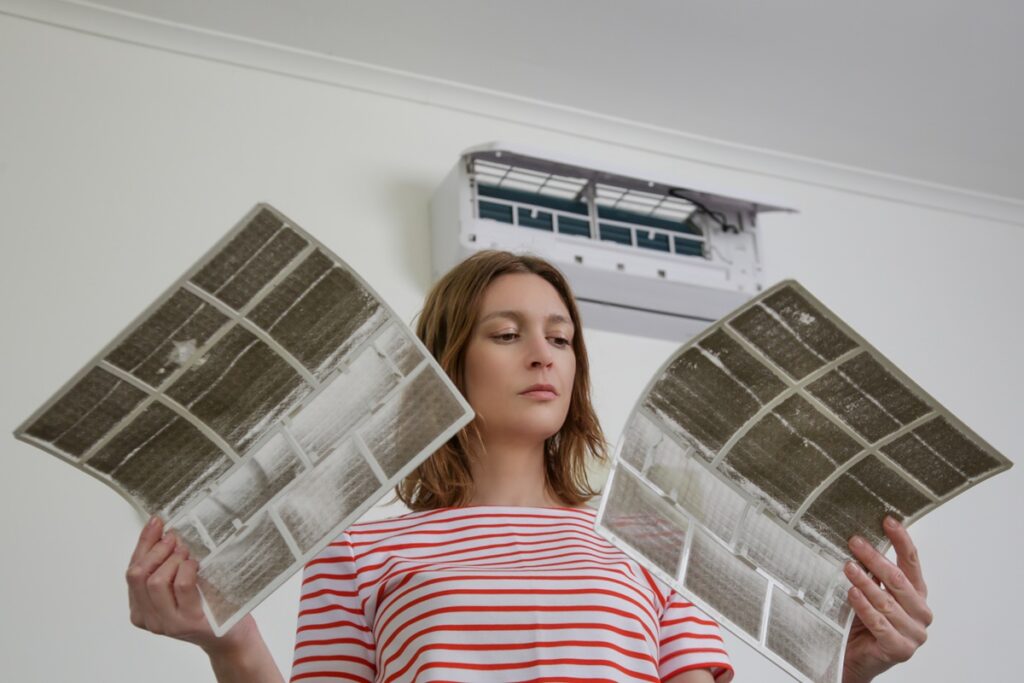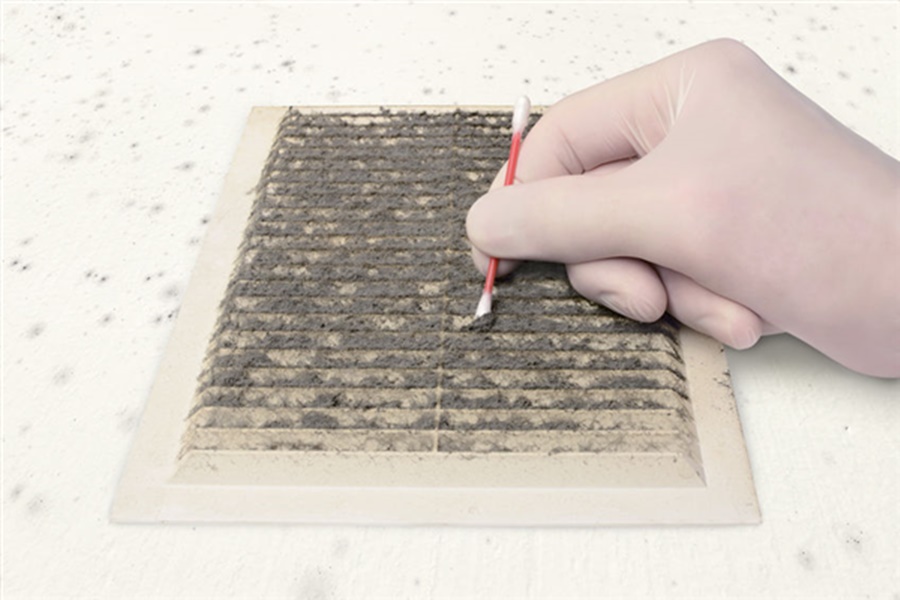Mold growth in HVAC systems is a common yet often overlooked issue that can lead to serious health problems and costly repairs. Identifying and eliminating mold in the HVAC system promptly can significantly improve indoor air quality and prevent further damage. In this detailed guide, we’ll cover how to check for mold in your HVAC system, the signs of mold infestation, and effective steps to prevent it.

What Causes Mold Growth in HVAC Systems?
Mold thrives in environments with high humidity and moisture, and HVAC systems can provide an ideal breeding ground for mold spores. When moisture accumulates in ducts, air handlers, or cooling coils, it creates a favorable environment for mold to develop. Air conditioners, dehumidifiers, and humidifiers all contribute to this problem if not maintained properly.
Common causes of mold growth in HVAC systems include:
Condensation: Moisture from air conditioning systems can collect in ducts, especially in humid climates.
Dirty air filters: When filters are clogged with dust and debris, they can trap moisture and mold spores.
Leaky ducts: Any leaks or cracks in your HVAC ducts can let in humid air from outside, creating a perfect habitat for mold.
Poor ventilation: Inadequate airflow or blocked vents can increase moisture levels in the system.
By identifying and addressing these issues, you can prevent mold growth and ensure a healthy indoor environment.
Signs of Mold Growth in Your HVAC System
There are several clear signs that indicate mold may be present in your HVAC system. Pay close attention to these symptoms to catch mold growth early:
1. Musty Odor in Your Home
A strong, musty odor is one of the first signs of mold in your HVAC system. If you notice this smell every time your HVAC system runs, it could be a sign that mold spores are circulating through your ducts. The musty odor may be most noticeable when the air conditioner or heater is running, as the moisture in the system helps release mold spores into the air.
2. Allergic Reactions
If you or your family members experience frequent allergic reactions, such as coughing, sneezing, nasal congestion, or itchy eyes, it could be due to mold spores being circulated by the HVAC system. Individuals with respiratory issues, such as asthma, may be particularly sensitive to mold exposure.
3. Visible Mold Growth
In some cases, you may be able to see the mold directly within the HVAC system. Mold can appear as green, black, or brown spots or patches on ductwork, cooling coils, or the air handler. Inspect areas that are often exposed to moisture, such as the cooling coils, drip pans, and condensation drains.
4. Increased Dust in the Air
If the air in your home feels dusty or dirty, this could be a sign that mold is accumulating in the ducts. Mold spores can attach to dust particles, which are then released into the air when the HVAC system operates.
How to Check for Mold in HVAC System
Performing a thorough inspection of your HVAC system is essential for identifying mold growth. Below are the key steps to effectively check for mold in your system:
1. Turn Off Your HVAC System
Before you begin any inspection, ensure that your HVAC system is turned off to avoid inhaling any mold spores or disturbing the system components.
2. Inspect the Air Filters
Start by removing and inspecting the air filters. If the filters appear dirty or clogged, it’s possible that mold spores have started to accumulate. Mold can grow on the filters if they have been exposed to high humidity levels. Replace the filters regularly to keep your system in good condition and prevent mold growth.
3. Examine the Ductwork
Next, check the ductwork for signs of mold growth. Look for visible mold on the duct surfaces or inside the vents. Mold can often be found in areas with poor airflow or where condensation has accumulated. Pay attention to the joints and seams where moisture might collect.
4. Inspect the Evaporator Coils and Drip Pans
The evaporator coils and drip pans are common places for mold to grow due to the moisture from air conditioning. Check these components carefully for any signs of mold or water damage. If you notice mold on the coils, it’s important to clean them immediately to prevent the spread of spores throughout the system.
5. Check the Condensation Drain
The condensation drain is responsible for removing moisture from the air handler. If this drain becomes clogged or obstructed, it can lead to moisture buildup, creating an ideal environment for mold. Ensure the drain is clear and functioning properly.
6. Perform a Visual Inspection of the Air Handler
Inspect the air handler for any visible mold growth. The air handler is the central part of your HVAC system that circulates air throughout the house. If mold is present in the air handler, it can spread rapidly throughout the entire system. Look for dark spots, discoloration, or any signs of moisture accumulation.
7. Check the Attic and Crawlspaces
In homes with attic or crawl space installations, mold can develop in areas with poor ventilation or excessive moisture. These areas can be linked to the HVAC system through ductwork, so inspect these spaces for mold growth as well.
Steps to Remove Mold from Your HVAC System
If you detect mold in your HVAC system, it’s crucial to act quickly to remove it and prevent further contamination. Here are the steps to safely remove mold:
1. Clean the Air Filters
Begin by replacing or cleaning the air filters. A dirty filter may be contributing to mold growth by trapping moisture and spores. Installing new, high-quality air filters can also help reduce the risk of mold regrowth.
2. Clean the Ductwork
If mold is found in the ducts, it’s important to clean them thoroughly. Professional duct cleaning services can remove mold, dust, and debris from the duct system. Attempting to clean ducts yourself could stir up mold spores, so it’s best to hire a professional for this task.
3. Clean the Evaporator Coils
To clean the evaporator coils, you can use a special HVAC coil cleaner or hire a professional to ensure the coils are sanitized properly. Regular cleaning can prevent mold buildup and improve your system’s efficiency.
4. Disinfect the Drip Pan and Drain
Use a disinfectant to clean the drip pan and condensation drain. This will eliminate any mold or mildew present and help prevent future growth. Regularly check the drain to ensure it is functioning properly.
5. Consider an Antimicrobial Treatment
An antimicrobial treatment can help prevent mold regrowth in the HVAC system. This treatment can be applied to the coils, ducts, and other components of the system to kill mold spores and prevent them from multiplying.
Preventing Mold Growth in Your HVAC System
Preventing mold growth in your HVAC system is easier than removing it once it has taken hold. Here are some steps to help you avoid mold issues in the future:
Maintain Proper Humidity Levels: Use a dehumidifier to control indoor humidity levels, especially in areas prone to high moisture levels.
Inspect and Replace Air Filters Regularly: Change air filters every 1-3 months to keep your system clean and efficient.
Ensure Proper Ventilation: Proper airflow is key to reducing moisture buildup in your HVAC system. Ensure all vents and ducts are clear of debris and blockages.
Schedule Regular Professional Maintenance: Hiring an HVAC professional for regular inspections and maintenance can help prevent mold and other issues before they become major problems.
By staying proactive with regular maintenance and cleaning, you can ensure that your HVAC system remains mold-free and operates efficiently.
Conclusion
Mold in HVAC systems is a serious issue that can lead to poor indoor air quality, health problems, and expensive repairs. Early detection and regular maintenance are essential for preventing mold growth in your HVAC system. By following the steps outlined in this guide, you can protect your home and family from the harmful effects of mold and ensure that your HVAC system operates efficiently for years to come.
